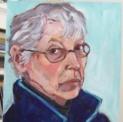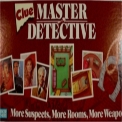Saturday, July 21: Mystery Masterclass
Last week, Eddy explained how he came up with the chilling refrain of “Nevermore!” in “The Raven”. This week, he explains how he came up with the final plot and illustrates directly from the poem itself.
THE PHILOSOPHY OF COMPOSITION
(part 4 of 4)
by Edgar A. Poe
Here then the poem may be said to have its beginning — at the end, where all works of art should begin — for it was here, at this point of my preconsiderations, that I first put pen to paper in the composition of the stanza:
“Prophet,” said I, “thing of evil! prophet still if bird or devil!
By that heaven that bends above us — by that God we both adore,
Tell this soul with sorrow laden, if within the distant Aidenn,
It shall clasp a sainted maiden whom the angels name Lenore —
Clasp a rare and radiant maiden whom the angels name Lenore.”
Quoth the raven — “Nevermore.”
I composed this stanza, at this point, first that, by establishing the climax, I might the better vary and graduate, as regards seriousness and importance, the preceding queries of the lover — and, secondly, that I might definitely settle the rhythm, the metre, and the length and general arrangement of the stanza — as well as graduate the stanzas which were to precede, so that none of them might surpass this in rhythmical effect. Had I been able, in the subsequent composition, to construct more vigorous stanzas, I should, without scruple, have purposely enfeebled them, so as not to interfere with the climacteric effect.
And here I may as well say a few words of the versification. My first object (as usual) was originality. The extent to which this has been neglected, in versification, is one of the most unaccountable things in the world. Admitting that there is little possibility of variety in mere rhythm, it is still clear that the possible varieties of metre and stanza are absolutely infinite — and yet, for centuries, no man, in verse, has ever done, or ever seemed to think of doing, an original thing. The fact is, originality (unless in minds of very unusual force) is by no means a matter, as some suppose, of impulse or intuition. In general, to be found, it must be elaborately sought, and although a positive merit of the highest class, demands in its attainment less of invention than negation.
Of course, I pretend to no originality in either the rhythm or metre of the “Raven.” The former is trochaic — the latter is octametre acatalectic, alternating with heptameter catalectic repeated in the refrain of the fifth verse, and terminating with tetrameter catalectic. Less pedantically — the feet employed throughout (trochees) consist of a long syllable followed by a short: the first line of the stanza consists of eight of these feet — the second of seven and a half (in effect two-thirds) — the third of eight — the fourth of seven and a half — the fifth the same — the sixth three and a half. Now, each of these lines, taken individually, has been employed before, and what originality the “Raven” has, is in their combination into stanza; nothing even remotely approaching this combination has ever been attempted. The effect of this originality of combination is aided by other unusual, and some altogether novel effects, arising from an extension of the application of the principles of rhyme and alliteration.
The next point to be considered was the mode of bringing together the lover and the Raven — and the first branch of this consideration was the locale. For this the most natural suggestion might seem to be a forest, or the fields — but it has always appeared to me that a close circumscription of space is absolutely necessary to the effect of insulated incident: — it has the force of a frame to a picture. It has an indisputable moral power in keeping concentrated the attention, and, of course, must not be confounded with mere unity of place.
I determined, then, to place the lover in his chamber — in a chamber rendered sacred to him by memories of her who had frequented it. The room is represented as richly furnished — this in mere pursuance of the ideas I have already explained on the subject of Beauty, as the sole true poetical thesis.
The locale being thus determined, I had now to introduce the bird — and the thought of introducing him through the window, was inevitable. The idea of making the lover suppose, in the first instance, that the flapping of the wings of the bird against the shutter, is a “tapping” at the door, originated in a wish to increase, by prolonging, the reader’s curiosity, and in a desire to admit the incidental effect arising from the lover’s throwing open the door, finding all dark, and thence adopting the half-fancy that it was the spirit of his mistress that knocked.
I made the night tempestuous, first, to account for the Raven’s seeking admission, and secondly, for the effect of contrast with the (physical) serenity within the chamber.
I made the bird alight on the bust of Pallas, also for the effect of contrast between the marble and the plumage — it being understood that the bust was absolutely suggested by the bird — the bust of Pallas being chosen, first, as most in keeping with the scholarship of the lover, and, secondly, for the sonorousness of the word, Pallas, itself.
About the middle of the poem, also, I have availed myself of the force of contrast, with a view of deepening the ultimate impression. For example, an air of the fantastic — approaching as nearly to the ludicrous as was admissible — is given to the Raven’s entrance. He comes in “with many a flirt and flutter.”
Not the least obeisance made he — not a moment stopped or stayed he,
But with mien of lord or lady, perched above my chamber door.
In the two stanzas which follow, the design is more obviously carried out: —
Then this ebony bird beguiling my sad fancy into smiling
By the grave and stern decorum of the countenance it wore,
“Though thy crest be shorn and shaven thou,” I said, “art sure no craven,
Ghastly grim and ancient Raven wandering from the nightly shore —
Tell me what thy lordly name is on the Night’s Plutonian shore!”
Quoth the Raven — “Nevermore.”
—
Much I marvelled this ungainly fowl to hear discourse so plainly,
Though its answer little meaning — little relevancy bore;
For we cannot help agreeing that no living human being
Ever yet was blessed with seeing bird above his chamber door —
Bird or beast upon the sculptured bust above his chamber door,
With such name as “Nevermore.”





















Sheesh! With no comments, Poe will never agree to write another column for us.
Poe knows we love him.
Hey, I did my part–I gave Poe a supporting role in my short story “Strike Zone” which will be published in an anthology later this year.
Oops, in case he is testy about the “supporting” aspect of his role, let me say that I read this series with great enthusiasm. Mr Poe points out quite eloquently that “originality . . . is by no means a matter, . . . of impulse or intuition. In general, to be found, it must be elaborately sought . . .” That is one of the hardest lessons I am learning as a writer. The ideas don’t just come–I have to look for them and I have to recognize them.